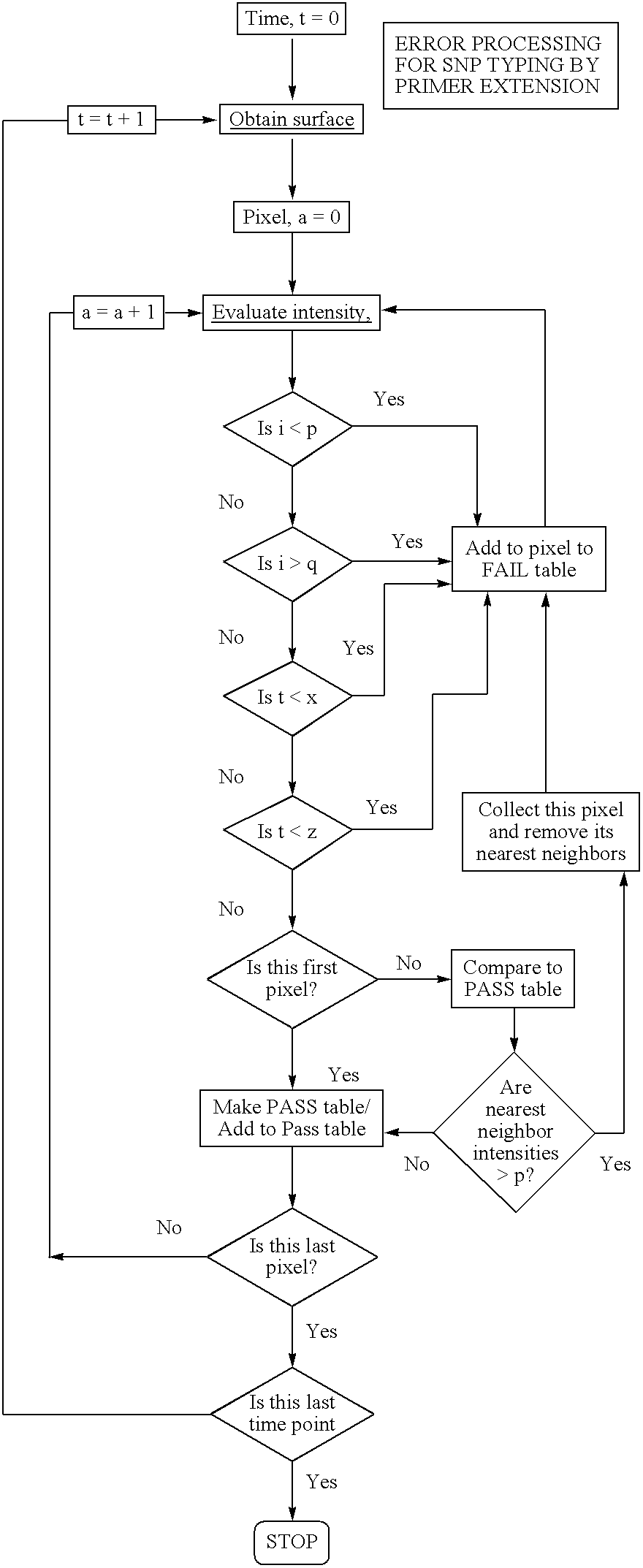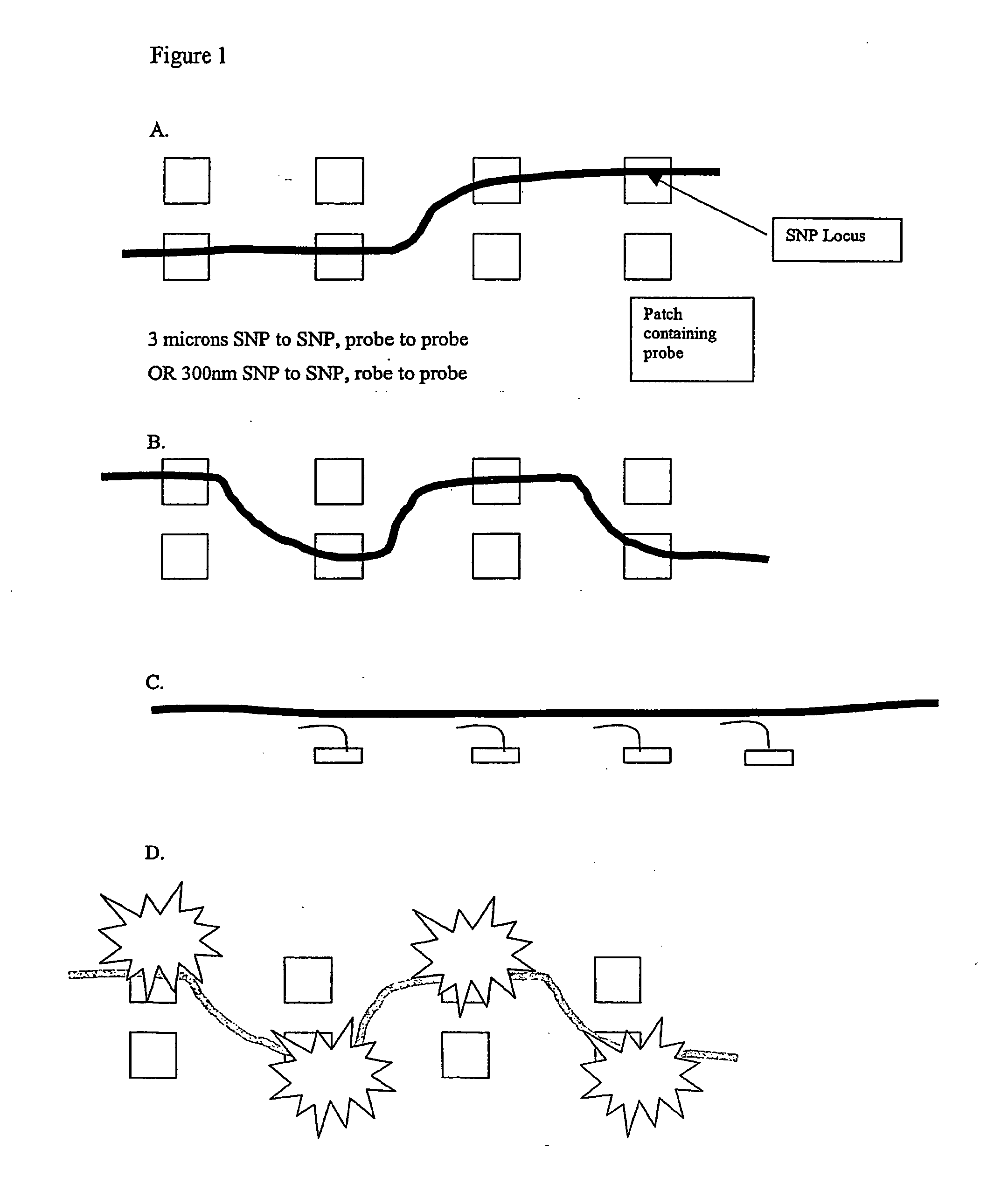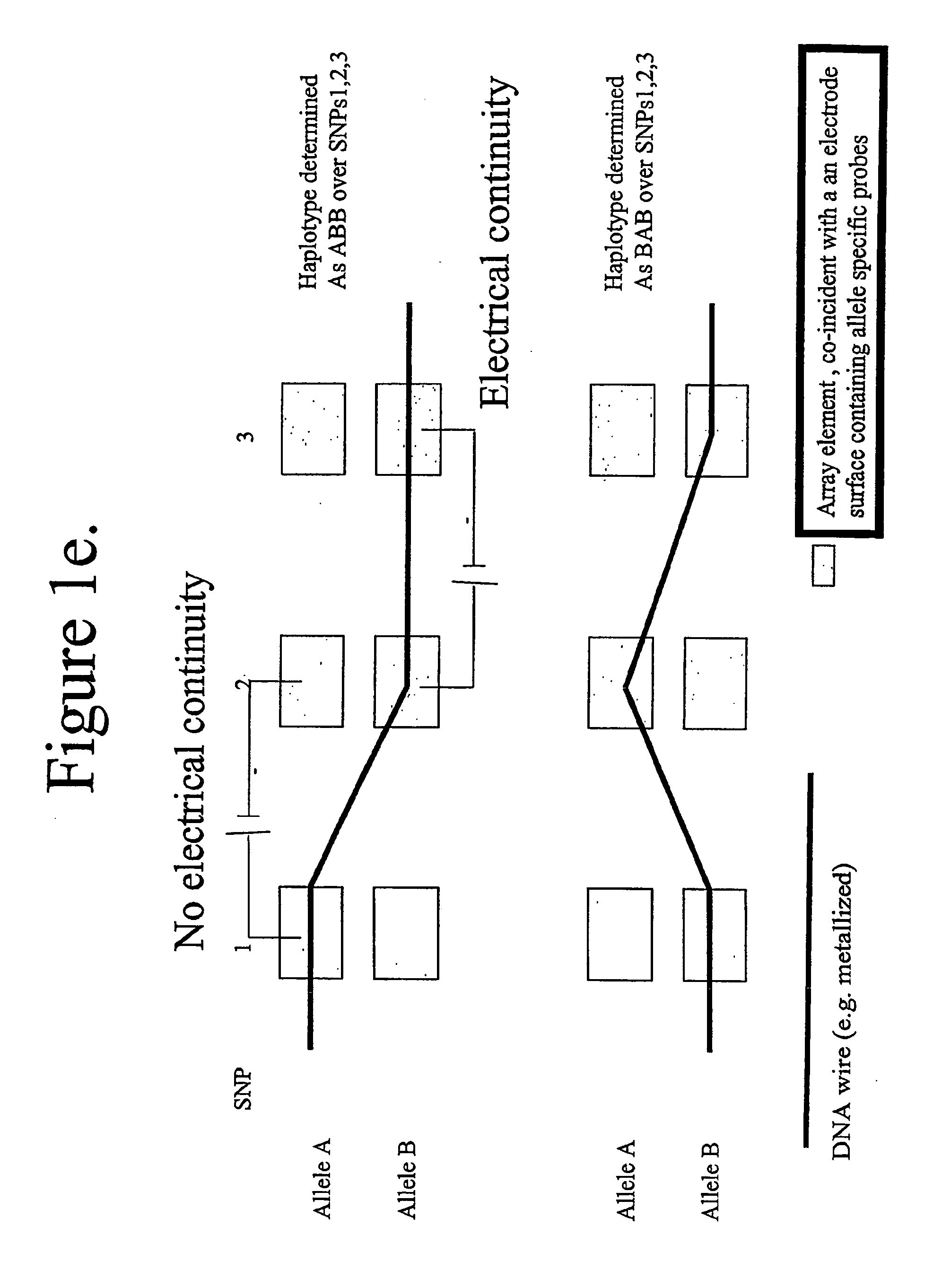Molecular arrays and single molecule detection
a single molecule, molecular array technology, applied in the field of single molecule analytical approaches, can solve the problems of limiting future progress in a number of directions, bulk nature of conventional methods that cannot access specific characteristics of individual molecules, and bulk analysis cannot resolve heterozygotic haplotypes, etc., to achieve speed and throughput, speed and richness of information
- Summary
- Abstract
- Description
- Claims
- Application Information
AI Technical Summary
Benefits of technology
Problems solved by technology
Method used
Image
Examples
example b
Sequencing Strategy Example B
[0777] Sequencing of spatially addressably captured genomic DNA is done by iterative probing with sets of 6 mer oligonucleotides. There are 4096 unique 6 mers, these are split into groups of 8 containing 512 oligonucleotide each. Each probe is labelled via a C12 linker arm to a dendrimer(Shchepinov et al Nucleic Acids Res. 1999 Aug. 1;27(15):3035-41) which carries many copies of this probe sequence (this construct is made on an Expedite 8909 synthesizer or an ABI 394 DNA synthesizer or custom made by Oswel). The 512 probe constructs of each set are hybridised simultaneously to the secondary genomic array. Following this the position of binding of the probes and the identity of the probes is detected by hybridisation of a library of microspheres, within which each microsphere is coated with a complementary sequence to one of the probe sequences (e.g by first coating mucrosphere with streptavidin (Luminex) and then binding biotinylated oligonucleotides to ...
example c
Sequencing Strategy Example C
[0778] Sequencing of spatially addressably captured genomic DNA is done by iterative probing simultaneously with sets of non overlapping or minimally-overlapping sequences added together and substantially overlapping sequences are added separatedly. Non-overlapping and minimaly overlapping sets of sequences from this set of 4096 are determined algorithmically. Each set is added one after the other. The position(s) of binding of oligonucleotidess in each set is recorded before addition of the next oligonucleotide. The target is preferentially in stretched single stranded form.
[0779] The information that is passed onto the algorithm for sequence reconstruction is the identity of the sequences in the non overlapping set, that they do not overlap, the positions of binding of probes from the set This is preferably done with a high resolution method such as AFM and the probe molecules need not be labelled. In another embodiment each probe is labelled for exam...
example e
Sequencing Strategy Example E
[0781] Sequencing of spatially addressably captured genomic DNA is done by iterative probing with complementary pairs of 6 mer oligonucleotides, both oligonucleotides labelled with the same label. There are 4096 unique 6 mer complementary pairs. Each pool is added to a separate S secondary array (capture probes to which the genomic sample array has been spatially addressably captured and combed). After each probing step the 6 mers are be denatured and then a different complemntary pair is added
[0782] The target is preferentially double stranded in this example and not denatured in situ. However denaturation in situ is an alternative.
[0783] Each of one the 256 BainsProbes in each pool will be hybridised to a secondary array. To reduce time and the affects of attrition on the secondary array, multiple BainsProbes are annealed at one time. In this example two will be labelled at one time and preferentially, these will be differentially labelled, for examp...
PUM
| Property | Measurement | Unit |
|---|---|---|
| distance | aaaaa | aaaaa |
| distance | aaaaa | aaaaa |
| distance | aaaaa | aaaaa |
Abstract
Description
Claims
Application Information
 Login to View More
Login to View More - R&D
- Intellectual Property
- Life Sciences
- Materials
- Tech Scout
- Unparalleled Data Quality
- Higher Quality Content
- 60% Fewer Hallucinations
Browse by: Latest US Patents, China's latest patents, Technical Efficacy Thesaurus, Application Domain, Technology Topic, Popular Technical Reports.
© 2025 PatSnap. All rights reserved.Legal|Privacy policy|Modern Slavery Act Transparency Statement|Sitemap|About US| Contact US: help@patsnap.com



